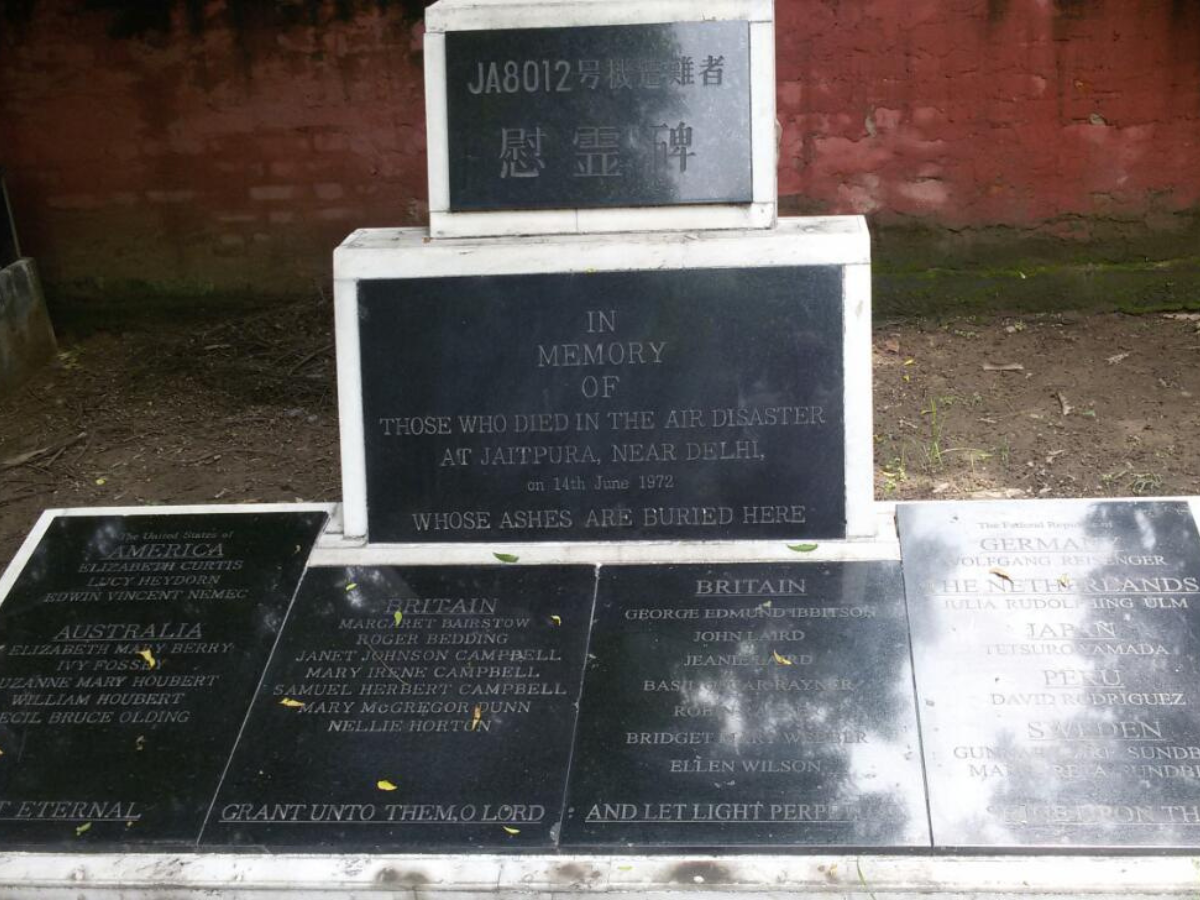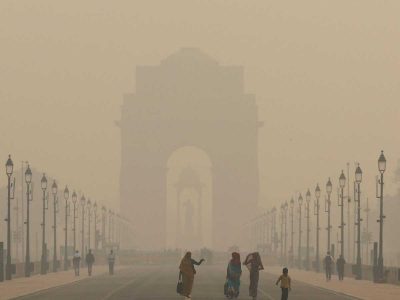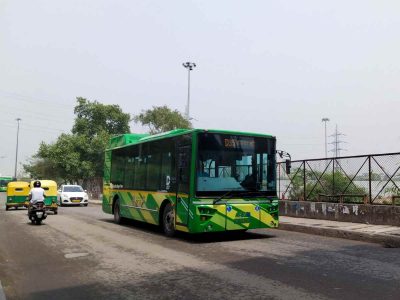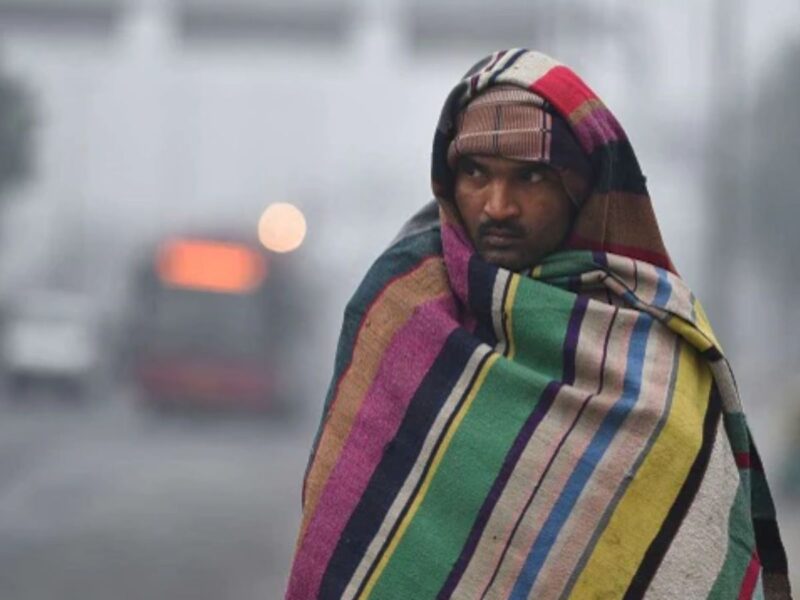If you roam inside the Royal Cemetery on Prithiviraj Road, you will come across a small grave that unites Britain, USA, Brazil, Germany, Australia and Japan, the major G-20 member countries.
The small symbolic grave belongs to the unfortunate passengers of a Japan Airlines flight, which crashed on the fateful June 14, 1972 in the barren land of south Delhi.
Altogether 82 of the 87 occupants perished in the crash. The ill-fated plane was carrying passengers mainly from Japan, Brazil and USA.
That flight was travelling from Bangkok’s International Airport to Palam International Airport, New Delhi but crashed short of the airport in New Delhi, killing 10 of the 11 crew members and 72 of the 76 passengers. Four people on the ground were also killed.
The epitaph written on the grave says, “In memory of those who died in the air disaster at Jaitpura, Near Delhi on 14th June, 1972, whose ashes are buried here.”
Tamil and Hindi poet Bhaskar Rammurthy still vividly remembers the time the plane crashed.
“During those days, I was living in Laxmi Bai Nagar (10.3 km from Vasant Kunj) when we got the news of plane crash in the night. I still remember some of our neighbours went to the accident site to help the victims.”
George Solomon of Delhi Brotherhood Society and the priest of Pitampura Church says, “I place flowers at the symbolic grave as and when I visit the grave. I think US President Joe Biden, Brazil President Lula da Silva and the Japanese Prime Minister must visit the symbolic grave of their compatriots and place wreath there.”
Jessica Lal, a model murdered in a restaurant in 1999 by Manu Sharma, sleeps to the right of this grave.
Sixteen of the dead in the plane crash were Americans. Brazilian actress Leila Diniz was also among those killed. The sole Indian passenger on the flight was Dr KKP Narasinga Rao, a senior official of the Food and Agricultural Organization (FAO) of the United Nations.
The exact cause of the accident remains disputed.
Investigators representing Japan pointed to the possibility of a false glide path signal causing the crash. Indian investigators claimed the crash was caused by a pilot error, specifically the captain ignoring instrument indications and not having sight of the runway.
Will Japan PM meet our ‘Japanese’
Japan Prime Minister Fumio Kishida would also like to meet the tender-looking but diminutive 87-yer-old Katsu Saan in Delhi.
Katsu Saan, also known as Katusa Behn, has not missed even a single all-religion prayer since she was first asked to join it in 1969.
She recites the Buddhist prayer on October 2 and January 30. Japanese by birth, Katsu Saan came to India in 1959 to study Buddhism in the land of Buddha. In the process, she began teaching both Hindi and Gandhi’s thoughts as well.
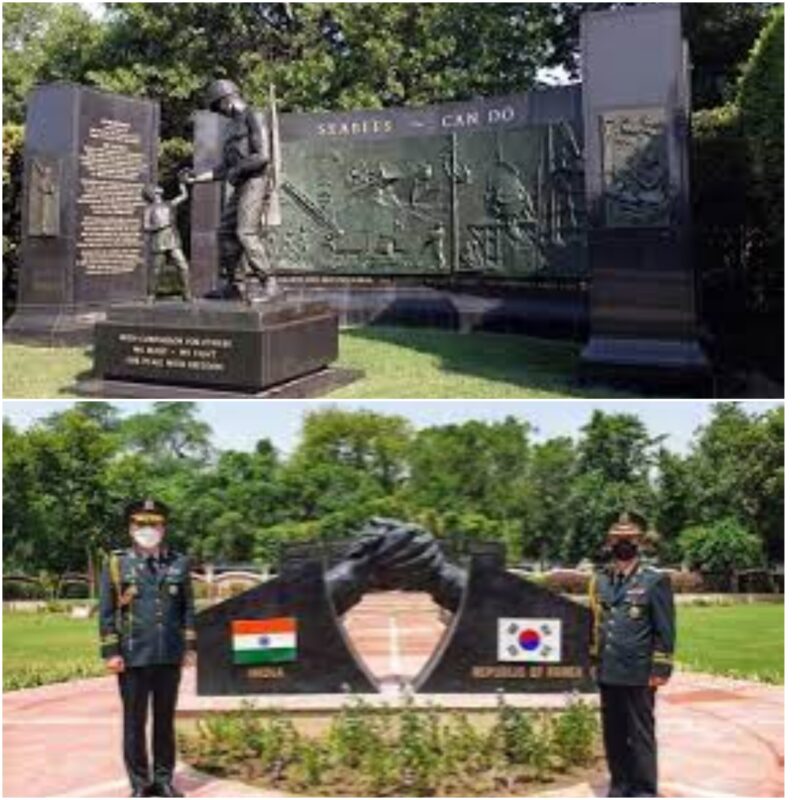
“While exploring Buddhism here, I started loving India deeply. That has forced me to stay here for the rest of my life. I learnt Hindi and the life and times of Gandhiji from Kaka Sahab Kalelkar in Delhi,” informs Katsu Saan, who looks after the affairs of the Vishwa Shanti Stupa, also known as the World Peace Pagoda, located at Indraprastha Park in the heart of Delhi.
South Korean war memorial in Delhi
When South Korean President Moon Jae-in will move to his hotel after his arrival here in the Capital on September 8, he may visit the South Korean War Memorial at Thimayya Park in Delhi Cantonment area during his stay of four days here. The memorial is not very far from the Army Base Hospital.
Alas, not many people are aware of this memorial. South Korea greatly owes India for sending medical and custodian forces during the Korean War from 1950-53.
“Both India and South Korea agreed to build a war memorial here to commemorate the service India had provided to South Korea during the war time,” Shin Bong-kil, South Korea’s envoy in India, had once said.
Such memorials are present in all the 22 countries that helped South Korea when it was fighting a grim war against North Korea.
There is also a bust of Gurudev Rabindranath Tagore in Seoul, the capital of South Korea. Tagore is very respected there since he wrote a poem on the great heritage of Korea in 1929.
There is a stamp of Korean architecture in the war memorial. The South Korean government had requested Indian government to allot a piece of land in Thimayya Park for emotional reasons.
General Kodandera Subayya Thimayya is not only an Indian military hero, he is also a hero of the Korean War.
“It has been decades since the end of the Korean War but even to this day, he is remembered by Koreans with gratitude and affection for his tactical support,” said an official, who has visited South Korea.
India had rushed 3,500 custodian forces to assist South Korea in the post-war settlement for the prisoners of war while other countries also sent their combat forces. India played a neutral role and contributed in a peaceful manner.
Late Anup Kothari, an acclaimed Delhi based architect, had designed the South Korean embassy in Delhi.
“I am very proud of the fact that I was responsible for the designs of South Korean, Bulgarian and Ethiopian missions. An interesting thing happened when I was designing the South Korean embassy. The ambassador wanted me to make a South Korean pagoda in the campus. So, he asked me, ‘would you like to go to South Korea?’”
“Newsweek had covered a very famous architect, Professor Kim, who had won a competition and was awarded by the Queen of Iran. So, I asked, if I have to go to South Korea, I have to meet this man. The ambassador said, alright, we’ll arrange it. I had the opportunity to spend a week with him and see his work, meet his people. His office was quite international-level,” Kothari narrated this anecdote to this writer couple of years ago in his Connaught Place office.
Kothari had also designed PTI building at Sansad Marg and Escorts Hospital.

